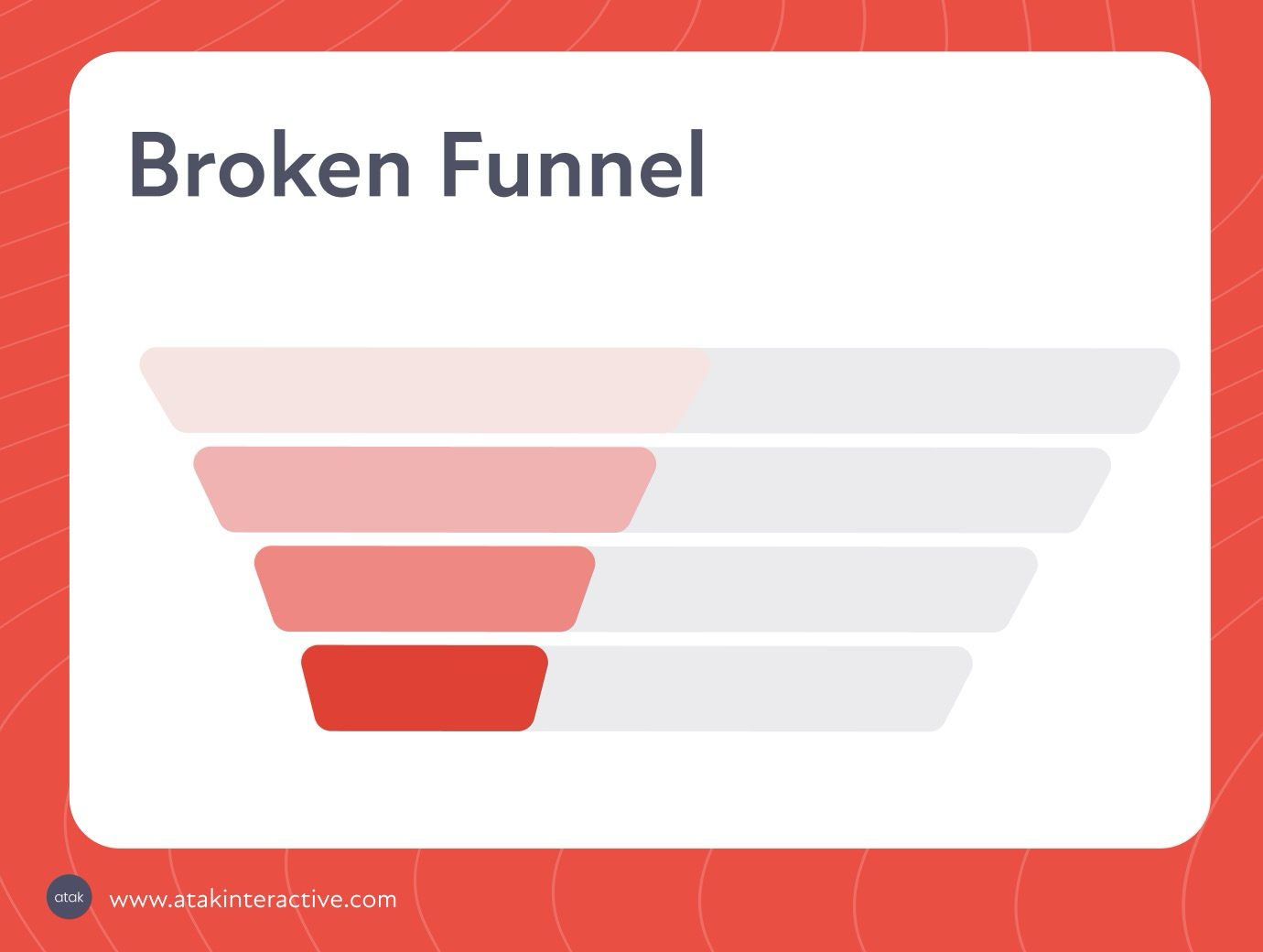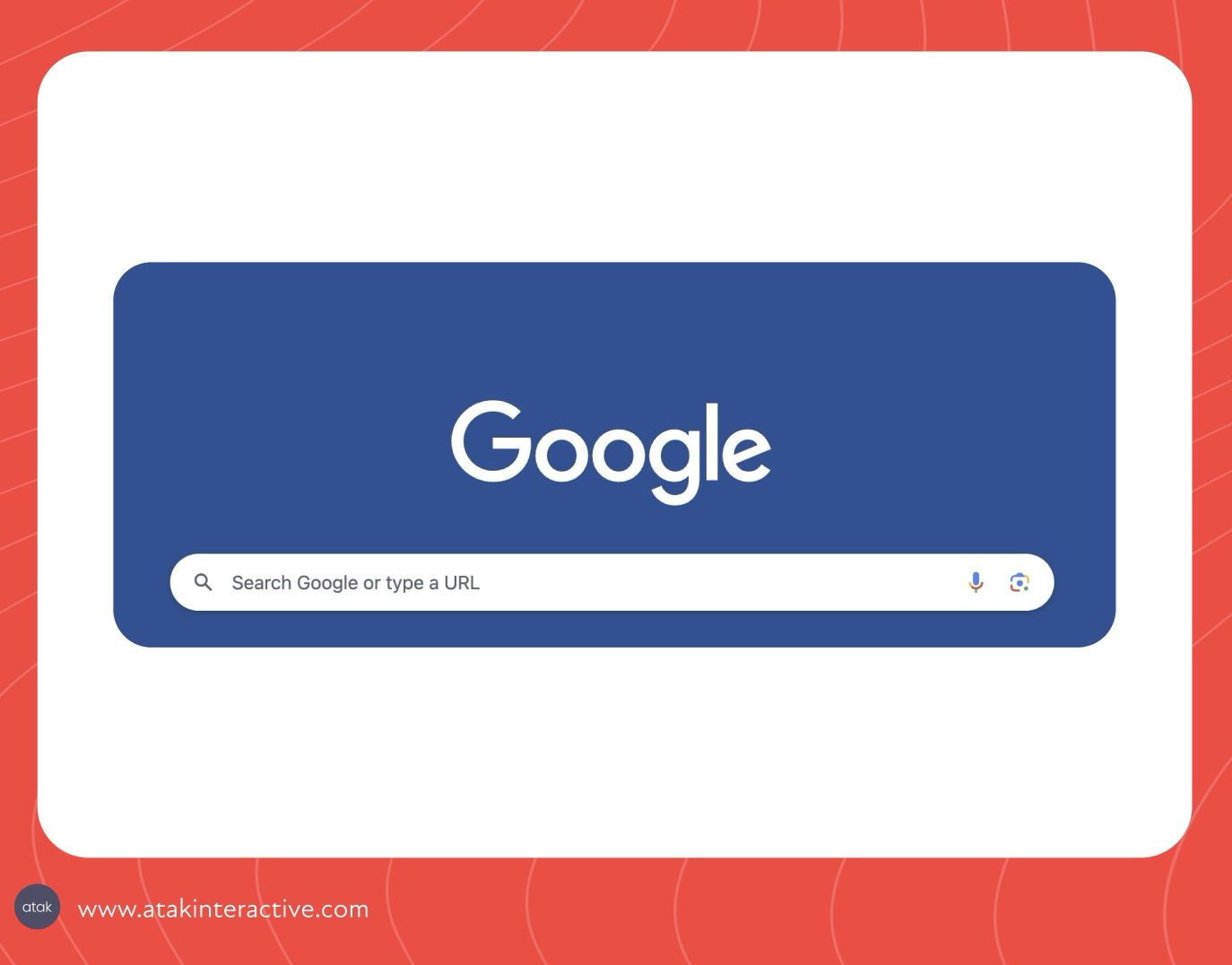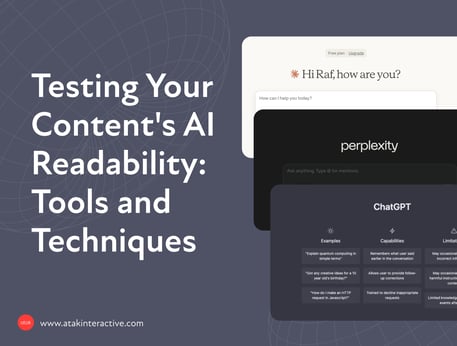Brand Awareness vs Conversion-Focused Marketing in the Age of AI
Brand Awareness vs Conversion-Focused Marketing in the Age of AI
The sales playbook that worked five years ago is dead. And if you're still running conversion-focused campaigns like it's 2019, you're about to get left behind.
Here's what changed: AI platforms now answer your prospects' questions before they ever reach your website. Google's AI Overviews, ChatGPT, Perplexity—they're giving buyers the information they need without sending them to you. The old funnel where someone searches, clicks your ad, and books a demo? That's not how buying happens anymore.
This shift is forcing a conversation that marketers have been screaming about for years, but sales leaders haven't wanted to hear: brand awareness isn't optional anymore. It's the foundation for everything else.
And before you roll your eyes—this isn't about throwing money at billboards or sponsoring conferences. This is about becoming the authoritative voice in your space so that when AI platforms answer questions, they cite you. When prospects research solutions, they already trust you. When they're ready to buy, you're the obvious choice.
Let's break down why this matters now more than ever, what's actually changed, and how to adapt without abandoning the conversion metrics you still need to hit.
The Old Funnel Is Broken (And Why Sales Teams Are Finally Listening)

Five years ago, conversion-focused marketing was the hero. Someone searches "best project management software," sees your paid ad at the top, clicks through to a landing page with three clear CTAs, and books a demo. Clean. Fast. Attributable.
Sales teams loved it because it felt direct. Marketing could prove ROI in weeks. The funnel was tight.
Now? That same search pulls up an AI Overview listing five tools with feature comparisons, pricing hints, and use cases—all before anyone clicks a single link. Your prospect just got 80% of the information they needed without ever visiting your site.
And if your brand isn't mentioned in that AI-generated summary? You don't exist to that buyer.
This is the shift that's making sales leaders finally listen to what marketers have been saying forever: you can't skip the top of the funnel anymore. Not because it's "best practice." Because the platforms won't let you.
AI search platforms—Google's Gemini, ChatGPT, Perplexity—prioritize sources that demonstrate expertise, authority, and trust. If you only have bottom-of-funnel content (pricing pages, demo forms, product comparisons), you don't have the depth AI needs to cite you.
The playbook has flipped. Top-of-funnel isn't just lead gen. It's visibility insurance.
What "Brand Awareness" Actually Means in 2025
Let's clear something up: brand awareness in 2025 is not the same as slapping your logo on a bunch of ads and hoping people remember you.
Old brand awareness was about reach. How many people saw your name? How many impressions did you get? Did anyone recognize your logo at a trade show?
New brand awareness is about authority. When someone asks a question in your category, does your brand come up? Are you cited by AI platforms? Do buyers already trust you before they ever talk to sales?
This is what Google calls E-E-A-T: Experience, Expertise, Authoritativeness, and Trustworthiness. It's the criteria AI platforms use to decide which sources to pull from when generating answers.
You can't fake this with paid ads. You can't buy your way into it with sponsored posts. You earn it by publishing content that demonstrates you actually know what you're talking about—and doing it consistently across multiple formats.
Brand awareness now means you're the leader in your space, not just a participant. And leadership requires a point of view, not just product messaging.
The Search Experience That Changed Everything

Let's walk through what actually happens now when someone searches for a solution.
2019 Search Experience:
- User searches "best project management software"
- Sees three paid ads at the top
- Sees organic results below (usually listicles and directories like G2)
- Clicks one, reads a comparison, books a demo
2025 Search Experience:
- User searches "best project management software"
- AI Overview appears with a summary of 5 tools, comparing features, pricing, and use cases
- User reads the overview, narrows their list from 10 to 5 before clicking anything
- Only then do they visit a website—and they're already 70% educated
Here's the problem for sales teams: That buyer is coming in later in the journey, more informed, and with stronger opinions. If your brand wasn't in that AI Overview, you're not even in the consideration set.
And here's the reality: you can't pay your way into AI summaries. You earn your way in by being authoritative, helpful, and consistent across content formats.
The shift from clicks to citations is the single biggest change in B2B marketing since Google AdWords launched. And most companies are still pretending it's not happening.
Why Top-of-Funnel Content Now Drives Bottom-of-Funnel Results
Here's the part that makes sales leaders nervous: investing in educational content that doesn't immediately convert feels like a gamble.
But here's what actually happens when you publish strong top-of-funnel content:
- You build topical authority. AI platforms (and Google) look at the breadth and depth of your content. If you only write about your product, you don't have authority. If you publish thoughtful guides, frameworks, and insights across your category, you do.
- Your middle and bottom-of-funnel content performs better. Google doesn't rank pages in isolation. It evaluates your entire site. Strong top-of-funnel content signals to Google that you're an expert, which lifts the performance of your product pages, case studies, and comparison content.
- Attribution gets clearer over time. Yes, it's harder to attribute a sale to a thought leadership blog post. But when you track the full journey in HubSpot or Salesforce, you'll see top-of-funnel content showing up in every closed deal. Buyers read 5-7 pieces of content before talking to sales. If you're not creating that content, someone else is.
Think of it this way: top-of-funnel content isn't a cost center. It's infrastructure. You're building the foundation that makes every other marketing channel work better.
And the data backs this up. Companies that publish consistent educational content see:
- Higher organic traffic (duh)
- Faster deal velocity (buyers are pre-educated)
- Lower CAC (less paid spend needed to close deals)
- Higher close rates (trust is already established)
The rising tide lifts all boats. Invest in thought leadership, and your conversion-focused assets perform better too.
How to Shift Your Mindset from Brand to Leadership
If you're a sales leader reading this and thinking "great, now I have to care about blogs," you're missing the point.
This isn't about brand awareness in the fluffy marketing sense. This is about leadership awareness. Becoming the voice your prospects turn to before they even know they need a solution.
Here's the reframe:
Old mindset: "We need to get our name out there." New mindset: "We need to own the conversation in our category."
Old mindset: "Let's sponsor a conference and hand out swag." New mindset: "Let's publish the framework everyone in our industry references."
Old mindset: "We'll run ads to drive traffic to our demo page." New mindset: "We'll answer the questions our buyers are asking AI platforms, so we're cited as the expert."
Sales teams don't want to hear about "brand building." They want to hear about market positioning and thought leadership.
When you're the company that educates the market, you're not just generating leads—you're pre-closing deals. Buyers show up already believing you're the best option because they've been learning from you for months.
That's what leadership awareness does. And that's why it matters more than ever.
Getting Found in AI Platforms: GEO, AEO, and SEO Working Together
You've probably heard the acronyms by now: SEO, AEO, GEO. Let's break them down, because they're not separate strategies—they're layers of the same approach.
SEO (Search Engine Optimization): The foundation. Writing content that ranks in Google's traditional search results. Still matters. Still necessary. But no longer sufficient on its own.
AEO (Answer Engine Optimization): Optimizing your content to appear in featured snippets, AI Overviews, and direct answers. This means structuring content with clear questions, concise answers, and schema markup that helps AI platforms extract and cite your information.
GEO (Generative Engine Optimization): Making sure AI models like ChatGPT, Claude, and Perplexity know who you are, trust your content, and cite you when users ask questions. This requires publishing open-access, authoritative content that machines can parse and reference.
Here's how they work together:
- You write a comprehensive guide (SEO)
- You structure it with clear FAQs and schema markup (AEO)
- You publish it openly and build backlinks from credible sources (GEO)
- Google ranks it, AI Overviews cite it, and ChatGPT references it when someone asks a related question
You're not choosing between these strategies. You're building content that works across all of them.
What this looks like in practice:
Let's say you're a RevOps agency. You write a guide on "How to Integrate HubSpot and Salesforce Without Breaking Your Sales Process."
- SEO play: The guide ranks for high-intent keywords around HubSpot Salesforce integration
- AEO play: You include FAQs like "What's the most common mistake in HubSpot Salesforce integrations?" with clear, schema-marked answers
- GEO play: The content is comprehensive, well-structured, and cited by other authoritative sites, making it more likely ChatGPT includes you when someone asks about CRM integrations
One piece of content. Three layers of visibility. That's the new playbook.
The Content Velocity Problem (And How AI Helps)
Here's the challenge: to dominate search in 2025, you need to publish more content, across more formats, at a higher velocity than most in-house teams can handle.
You need:
- Long-form guides for SEO
- Structured FAQs for AEO
- Video content for YouTube and social
- Transcripts that AI platforms can parse
- Repurposed content for LinkedIn, newsletters, and ads
Most companies hear that list and think "impossible." And if you're doing it manually, it probably is.
This is where AI-assisted content production (AIO) comes in.
Not AI-generated garbage that sounds like a robot wrote it. AI-assisted production that lets humans create more, faster, without sacrificing quality or voice.
How this works:
- A subject matter expert records a 10-minute video explaining a concept
- AI transcribes it, structures it, and turns it into a blog post
- A human editor polishes the post, adds examples, and ensures it matches your brand voice
- The blog is published with schema markup for AEO
- The video is uploaded to YouTube with an optimized transcript
- Key insights are repurposed into LinkedIn posts and email content
Result: One piece of thought leadership becomes 10+ assets, all optimized for different platforms, all working together to build authority.
This is how you scale content without losing quality. And it's how you keep up with the velocity required to compete in AI-driven search.
Measuring Brand Awareness Without Losing Your Mind
Sales leaders want numbers. Marketers want to prove ROI. So how do you measure brand awareness in a way that actually matters?
Old metrics (still useful, but incomplete):
- Organic traffic
- Backlinks
- SERP rankings
- Impressions
New metrics (what actually matters now):
- AI citation share: How often is your brand mentioned in AI-generated responses? Track this manually for now (tools are coming).
- Featured snippet appearances: How many of your pages appear in Google's AI Overviews or featured snippets?
- Topical authority score: Use tools like MarketMuse or Clearscope to measure your content depth compared to competitors.
- Branded search volume: Are more people searching for your company name? That's real awareness.
- Content-influenced pipeline: In HubSpot or Salesforce, track how many closed deals engaged with top-of-funnel content before converting.
Here's the dashboard we recommend:
- Traditional SEO metrics (traffic, rankings, backlinks)
- AI visibility metrics (citations, featured snippets, answer appearances)
- RevOps integration (pipeline influence, deal velocity, close rates by content engagement)
You're not choosing between brand awareness and conversion metrics. You're measuring how brand awareness drives conversions over time.
And here's the reality: companies that track this stuff are seeing 40% faster sales cycles, 30% higher close rates, and 25% lower CAC. Brand awareness isn't soft. It's ROI in slow motion.
What Sales Leaders Need to Hear About This Shift
If you're in sales, here's what you need to know:
- Your buyers are more educated than ever before. They're reading content, watching videos, and asking AI platforms for recommendations before they ever talk to you. If your company isn't creating that content, your competitors are.
- Top-of-funnel content shortens sales cycles. Educated buyers move faster. They ask better questions. They're easier to close because they already trust you.
- This isn't a marketing expense—it's sales enablement. Every piece of thought leadership content is a resource your team can use to nurture prospects, answer objections, and build trust.
- Attribution will get clearer. Yes, it's harder to tie a blog post to a closed deal. But with proper tracking in HubSpot or Salesforce, you'll see top-of-funnel content showing up in every deal. It's not invisible—it's just earlier in the journey.
- The companies that dominate your category in 2026 will be the ones investing in this now. You can either lead the conversation or get buried by competitors who do.
Here's the bottom line: marketing and sales need to row in the same direction. Marketing builds the authority. Sales closes the deals. But neither works without the other.
The Bottom Line: Own Your Corner or Get Buried
The search landscape has changed. AI platforms are the new gatekeepers. And if you're not building the authority to get cited, you're invisible.
This isn't about choosing between brand awareness and conversion-focused marketing. It's about understanding that brand awareness—or more accurately, leadership awareness—is now the foundation for everything else.
Here's what winning looks like in 2025:
- You publish thought leadership content at high velocity across multiple formats
- Your content appears in Google's AI Overviews, ChatGPT responses, and Perplexity citations
- Buyers discover you before they ever search for a vendor
- When they're ready to buy, you're the obvious choice because they've been learning from you for months
And here's what losing looks like:
- You keep running conversion-focused campaigns like it's 2019
- Your competitors dominate AI search
- Buyers never hear your name until they're already 80% through the decision process
- You're fighting on price instead of leading on value
The companies that win in 2026 won't be the ones with the biggest ad budgets. They'll be the ones who own the conversation in their category.
So the question is: are you going to lead, or are you going to follow?



